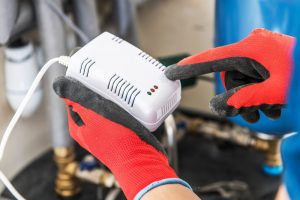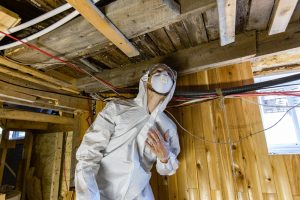
24/7 Heating and Cooling Repair Service
Take a look at DIY tests and know when to call a pro
Curious about the air quality in your house? Wondering what’s the best way to test and monitor it? Look no further. Here are obvious signs that point to poor air quality and several ways to find out what funky stuff is floating around in your home.
SIGNS YOU SHOULD TEST YOUR AIR QUALITY
If you have any health symptoms like chronic allergies and asthma, frequent headaches, bronchitis or colds that last an unusually long time, your body may be feeling the effects of pollutants in your home. And those airborne irritants could be anything from gas fumes to pet dander to mold that you can’t even see.
Sometimes the contaminants are more extreme — like hazardous chemicals and asbestos. If you notice severe symptoms such as dizziness, nausea, rash, fever, chills, fatigue, vomiting or shortness of breath, you definitely need to have your air quality tested.
AIR QUALITY TESTS YOU CAN DO YOURSELF
If you’re the DIY type, here are 3 at-home air quality tests you can handle on your own.
Carbon Monoxide
Carbon monoxide is an odorless gas that comes from the fumes of gas appliances like stoves, ovens, grills, fireplaces, furnaces and water heaters. When carbon monoxide leaks and builds up, it can poison the people and animals breathing it in your home. Carbon monoxide poisoning may cause flu-like symptoms that can make you pass out and even kill you. Fortunately, installing carbon monoxide detectors to measure the levels in your home and alert you of problems is an easy way to protect yourself and your family. 
Radon: Radon is the second leading cause of lung cancer, so testing your home for this contaminant is a smart move. It’s a radioactive gas that naturally occurs as uranium breaks down in the soil and it can seep into your home and silently poison you. The good news is that if you find high radon levels from testing, you can do some simple home renovations to seal and caulk foundation cracks and reduce radon exposure.
You can purchase at-home radon tests at most home improvement stores or you can get discounted kits from the National Radon Program Services at Kansas State University. Tests typically use a charcoal reading that is collected in your home over a specific period of time. Then you mail the testing materials to a lab to get your results.
Allergens & Other Indoor Pollutants
If you want to continuously monitor common pollutants in your home, the Speck might be the solution for you. This device allows you to measure the levels of harmful particles over time, so you can make changes to your behavior to reduce contaminants in your house and improve your air quality. The Speck detects fine particles and alerts you about changes and trends in contaminant concentration. You can actually borrow a free Speck device from local libraries, just like checking out a book. If you want to purchase one to track your air quality for a longer period of time, you can buy a Speck for $149-$199 per device.
WHEN TO CALL A PROFESSIONAL
If you are experiencing health symptoms that may be related to bad air or you just want to play it extra safe, call a professional to test your home’s air quality. They’ll be able to run several tests at once and they know exactly what to look for when inspecting your home for potential danger zones. They can also help you figure out a game plan to improve the air quality in your home.
 Here are some of the contaminants a pro can test for:
Here are some of the contaminants a pro can test for:
• Indoor mold
• Lead-based paint
• Dust particles and other allergens
• Smoke-related air pollution
• Air fresheners, candles, and incense
• Household cleaners
• Combustion particles or gases
If you need help with your home’s air quality, contact Comfort Solutions today at 763-565-2121. We can help you track down pollutants and find a solution. Improving your air may be as simple as choosing the right air filter, using an air purifier or installing a whole-house air filtration system like a Trane CleanEffects™ Air Cleaner. 
*Re-posted by: https://www.trane.com/residential/en/resources/how-to-test-the-air-quality-in-your-home/
